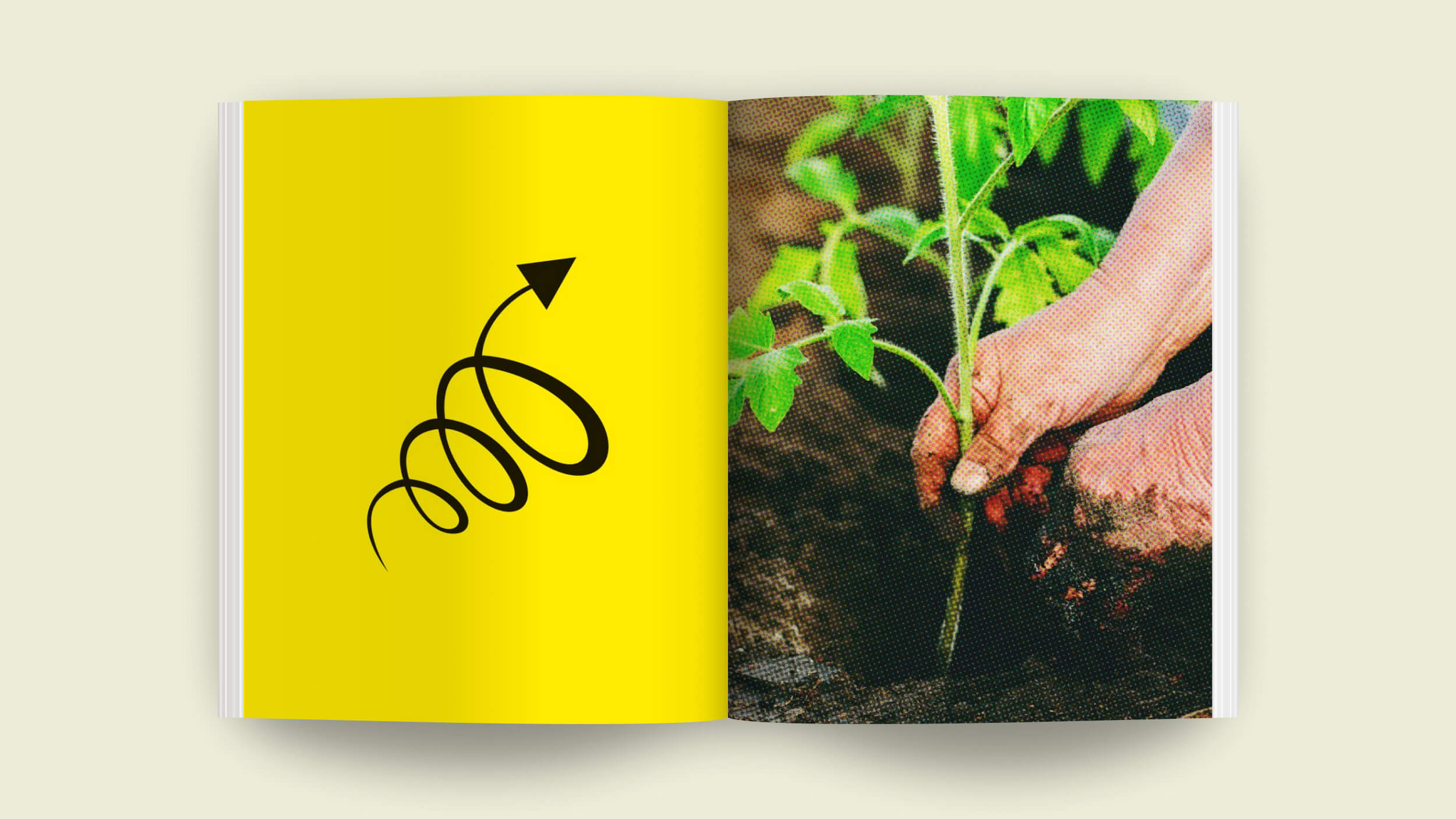In the 1970s, at the dawn of personal computers, people like Steve Jobs and the scientists at Xerox PARC talked about computers as “bicycles for our mind”. Sure, someone was going to make big money selling these hardware units, but the intention was at heart quite pure; computers would give our minds wheels to go farther than ever before. Our capabilities would be augmented by technology, and we would become smarter and more capable. That ethos has not really stuck, and today we find ourselves in a Pavlovian relationship with push notifications, incapacitated by the multi-directional pull on our attention spans.
We’ve made it through every new technological wave—newspapers, radio, TV, laptops, cell phones—without the social decay that was widely prophesied, but there’s something different about smartphones loaded with apps living in the palm of our hand, says tech ethicist Tristan Harris. It would be a mistake not to recognize how, this time, it really is different. Companies today are not more evil than they were in the 1970s, what’s changed is the environment they operate in: the attention economy, where the currency is your eyeballs on their product, for as long as possible—precious exposure that can be sold to advertisers. Unlike the neutral technology we once used, and could walk away from, today’s technology uses us. Behind every app—Facebook, Twitter, Snapchat—are 1,000 software designers working every day to update and find new psychological levers to keep you hooked to this product. The most powerful development has been that of ‘likes’, public feedback that externalized our self-worth onto a score card (this has reached new heights with Snapchat’s streaks, which research by Emily Weinstein at Harvard has shown puts extreme stress on kids and adolescents.) “These products start to look and feel more like media that’s about maximizing consumption and less like bicycles for our minds,” says Harris. Is it too late to do something about the attention economy? To find out more about Tristan Harris, head to tristanharris.com.
Tristan Harris: Well, there's a really common misconception that technology is neutral and it's up to us to just choose how to use it.
And so we're sitting there and we're scrolling and we find ourselves in this kind of wormhole and then we say, “Oh man, like, I should really have more self-control." And that's partially true, but what we forget when we talk about it that way is that there's a thousand engineers on the other side of the screen whose job it was to get my finger to do that the next time. And there's this whole playbook of techniques that they use to get us to keep using the software more.
Was design always this manipulative? It wasn't always this way. In fact, back in the 1970s and the early '80s at Xerox PARC when Steve Jobs first went over and saw the graphical user interface, the way people talked about computers and what computers were supposed to be was a “bicycle for our minds” that, here we are, you take a human being and they have a certain set of capacities and capabilities, and then you give them a bicycle and they can go to all these new distances, they're empowered to go to these brand-new places and to do these new things, to have these new capacities.
And that's always been the philosophy of people who make technology: how do we create bicycles for our minds to do and empower us to feel and access more?
Now, when the first iPhone was introduced it was also the philosophy of the technology; how do we empower people to do something more? And in those days it wasn't manipulative because there was no competition for attention. Photoshop wasn't trying to maximize how much attention it took from you—it didn't measure its success that way.
And the Internet overall had been, in the very beginning, not designed to maximize attention, it was just putting things out there, putting things out there, creating these message boards.
It wasn't designed with this whole persuasive psychology that emerged later. What happened is that the attention economy and this race for attention got more and more competitive, and the more competitive it got to get people's attention on, let's say a news website, the more they need to add these design principles, these more manipulative design tactics as ways of holding onto your attention.
And so YouTube goes from being a more neutral, honest tool of just, “Here's a video,” to, “Oh, do you want to see these other videos? And do you want to auto-play the next video? And here's some notifications…”
These products start to look and feel more like media that's about maximizing consumption and less like bicycles for our minds.
And I think that's such a subtle an important thing to recognize, is that more and more of technology is really not on our team to help us spend our time the way we want to, it's more on the team of maximizing how much time we spend on the screen.
Right now, the only way to succeed in the app store is by proving you're really good at getting people's attention. And so by making attention the currency of success it forces all of these good-hearted, good-intentioned people who make apps or make media sites, to do things they don't want to do just because they have to get attention. You have mediation apps that have to send you all thee notifications and add streaks and do all this game-y stuff just to get you to use it the most, as opposed to having the phone itself recognize that there's parts of your life where mediation might want to be at the top of the list for you, because you're defining that, and so that meditation app could win for the right reasons, not for the wrong reasons.
So we always worry about new technologies when they first appear. When people started bringing out the newspapers on the subway people worried, “Oh my god, people are going to stop talking to each other on the subway!” And then TV showed up and people worried, “Oh my god, people are going to spend all this time at home!” And the radio—we always worry, and then somehow it seems to turn out okay. Back in the 1970s people were at home on the telephone and calling each other all the time, we thought, “Oh the kids these days, what are they doing to their minds?” So now it's tempting to say, “Well now the kids these days they're on Snapchat, and therefore we survived all those other technology transitions, nothing really bad happened, so maybe it's all okay, this is just kids being kids in a new way.” And I want to talk about why that's not true and why this is different.
What's different is that, let's say—let's take that telephone example: in the 1970s if someone picked up a telephone to go call their friend and they spent time gossiping on the telephone, we could do that, that's fine. But the telephone wasn't updated every day with new manipulative design principles to be better and better at seducing you into calling your friends.
So what's different with Snapchat is that there are a thousand engineers every single day who work on the product to actually find new ways not to just get you to use it but to kind of tap you both on the shoulder and try to get you into a reciprocity relationship where you owe someone else a response. In fact they have a feature in Snapchat called Snapstreaks. And Snapstreaks count the number of days in a row you've sent a message back-and-forth with someone. So if I have a best friend and we've been chatting every day for a hundred days I see a little fireball and the number 100 next to it. And what that does is, they've just created something now I don't want to lose because I have a streak going, I've got a hundred days and now if I don't send them a message tomorrow I'm going to lose the whole thing.
And when you're a kid actually this has a really big impact on you. I'm not making this up. There's a woman named Emily Weinstein at Harvard who studied the effects of Snapchat and Snapstreaks on kids by accident—it emerged in her interviews.
And she found out that kids, when they go on vacation they have to give their password to up to five other friends to actually have them send messages while they're gone on vacation because they're so worried about losing their Snapstreaks. In fact a lot of kids, they wake up and they see these 30 contacts with different streaks and they have to just take pictures of floors and ceilings just to kind of get through all these Snapstreaks so they don't lose any of them.
So we have to ask, when Snapchat is designing a feature like Snapstreaks, are they doing that because they most want to help kids empower them to live their lives or are they doing that because it's really good at getting their attention?
And when we're parents and we see kids using it this way we have to recognize there's something very different going on here. This was not true in the 1970s when we had a neutral telephone that we would choose to use when we wanted to use it. There are now a thousand people behind our new telephone, which is say, Snapchat, that's being designed and updated every day to be more compelling at addicting and holding onto people's attention. And it's not good for us.
I think we can all feel it. We become more and more on the treadmill to the number of likes or feedback we get, basically, from social media and start tying our own approval, our own self-worth to how much attention we get from other people. I mean, even for me I notice that if I post something it does affect me whether or not I have a lot of likes or few likes.
And it's hard to really, if you think about it and get to the sense of, “My self-worth is completely independent of that.” That's a subtle thing to hold and developmentally, children are more vulnerable to their self-worth being externalized like this.
And the problem is that there's always been, as well, ways of externalizing our self-worth in terms of how much money we have in our bank account or in terms of how many friends we have, but now the externalization of our self-worth is controlled by a handful of companies whose goals are different than our goals.
They're not evil companies, they just have the different goal of maximizing attention, and our goals are not that. But the problem is that their goals become our goals. This is what's actually so dangerous, is that their goals of engaging us the most by having us care about likes become our goals. We actually wake up in the morning as a sovereign human beings and we start caring about the number of likes we got, as if that's our goal in life. That becomes our goal. And it's as if we've been infected, it's as if they've drilled a hole in the back of our head and now they've injected the virus and now we walk around searching for feedback using social media. And they won, if that happens.
And again, it's not because they're evil but they're in a different game, they're trying to maximize attention. But we have to ask a much deeper question, which is: what do we want in our lives and what is our self-worth actually tied to? And maybe it's being virtuous or being a good friend or caring about what matters or living by our values.
There's a whole bunch of things that we can define for ourselves, and I think the less people have to find their own values the more vulnerable they are to someone else coming in and giving them their values. And to fix that we're going to need to talk about different kinds of metrics, different ways of measuring success and monetizing success. So instead of making more money the more time we get, we instead make more money the more we've helped you in your life.






